ITALY
Bologna

Bologna
Bologna
Bologna is a large university city in the north of Italy with a beautiful medieval center. It is not only an important agricultural center, but also a significant traffic junction. Beautiful buildings, delicious food and an impressive natural environment; that's the best way to describe Bologna.
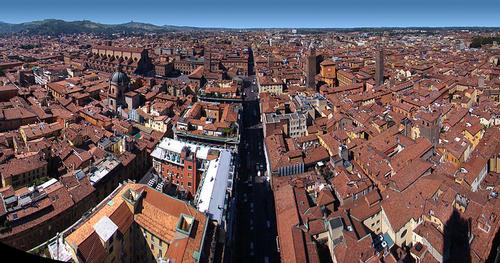 BolognaPhoto:Tango7174 CC 4.0 International no changes made
BolognaPhoto:Tango7174 CC 4.0 International no changes made
| advertisement |
| Hotels Bologna |
Location
Bologna is located at the foot of the Apennine Mountains in Northern Italy. The city is less than an hour's drive from the east coast. It is the capital of the Emilia-Romagna region. The city has an area of 140 km² and more than 283,000 inhabitants. Bologna is located between the rivers Savena and Reno.
Weather
The region where Bologna is located is characterized by a moderate continental climate. Summers are hot with temperatures that easily exceed 30 degrees Celsius. Winters are fairly cool with average temperatures of around five degrees Celsius, but it also freezes regularly. Most precipitation falls in the winter months; usually in the form of rain, but it can also snow.
History
Bologna was born in the 6th century BC under the name of Felsina. The city was the capital of the Etruscan Po Plain for two centuries until Gallic tribes took over. They renamed the city Bononia. They stayed for a few hundred years until the Romans came. It went on like this for a while; the Romans were followed by looting by the Visigoths, the Huns, the Goths and the Lombards.
In the 12th century, the University of Bologna had become the most prominent in Europe. The city was doing well and that resulted in many new buildings. Every wealthy family built their own tower to defend themselves if necessary. This amounted to 180 towers in total. Of these, 15 towers are still standing today.
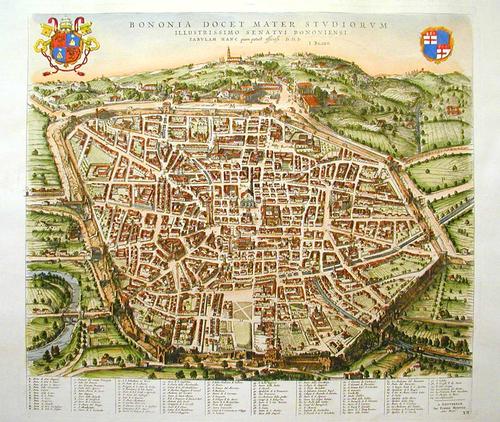 Bologna in 1640Photo: Public Domain
Bologna in 1640Photo: Public Domain
In 1506 there was a major revolt in Bologna against the then ruling Bentivoglio family. Both the family and the palace they owned were razed to the ground. The Pope's troops took the city until the arrival of Napoleon in the 18th century. In 1860 Bologna fell under the new Kingdom of Italy.
During the Second World War violent bombing took place in Bologna. The city was already of great value to Italy both industrially and infrastructurally, and so it was an important strategic target. More than 40% of the industry was destroyed and 44% of the infrastructure had disappeared or was badly damaged. Fortunately, the historic center of the city remained intact.
Bologna
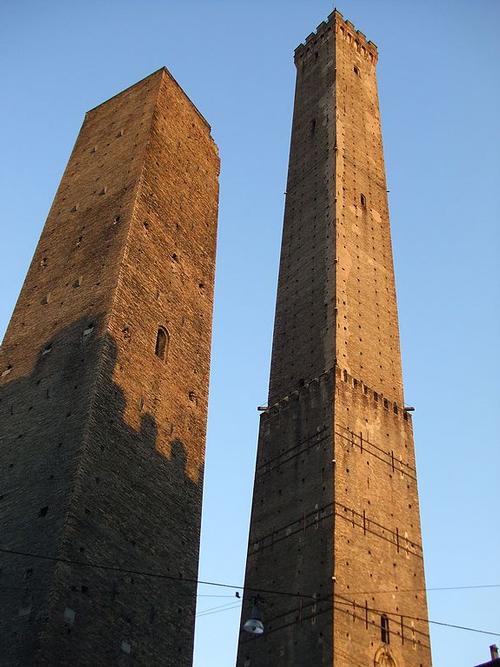 Two leaning towers BolognaPhoto: Onanymous CC 3.0 Unported no changes made
Two leaning towers BolognaPhoto: Onanymous CC 3.0 Unported no changes made
Not only Pisa has a leaning tower, Bologna even has two! They were built in the Middle Ages by wealthy families. The Asinelli and the Garisenda in Piazza di Porta Ravegnana are made of brick and are 97 and 48 meters high respectively. The Asinelli can be climbed, the Garisenda cannot. One thing is certain: the towers together form the landmark of Bologna.
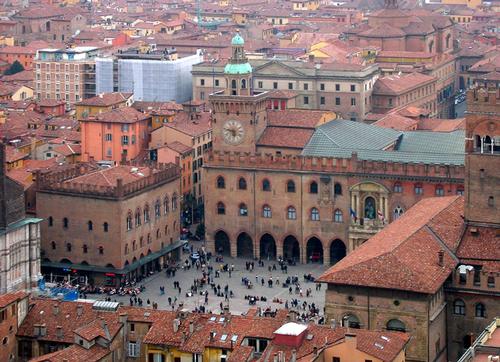 Piazzo Maggiore BolognaPhoto: Gaspa CC 2.0 Unported no changes made
Piazzo Maggiore BolognaPhoto: Gaspa CC 2.0 Unported no changes made
The Piazza Maggiore is a huge pedestrian square in the center of the oldest part of the city. Surrounded by many of Bologna's Renaissance and medieval buildings and monuments. In the area there are many cafes, bars, musicians and street performers, the busy square has an exciting and cozy atmosphere.
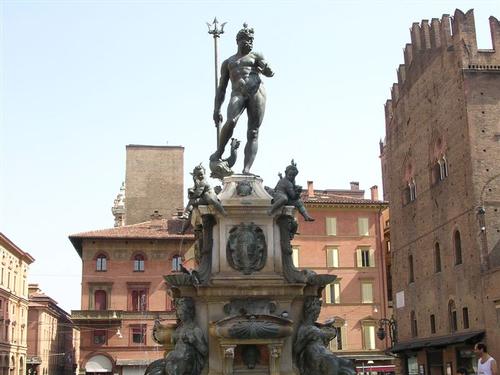 Fontana del Nettuno BolognaPhoto: Paolo Carboni CC 3.0 Unported no changes made
Fontana del Nettuno BolognaPhoto: Paolo Carboni CC 3.0 Unported no changes made
Then you come to the Piazza del Nettuno where you will find the large and famous Fontana del Nettuno, a fountain built in 1566 by Tomaso Laureti of Palermo and later embellished by Giambologna. With a group of angels and fish, a huge statue of Neptune stands on top of the fountain. This rather lavish and very beautiful fountain is a useful a meeting point in the Piazza del Nettuno.
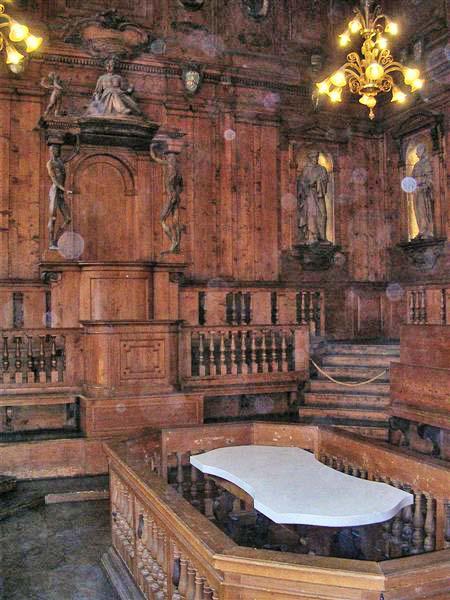 Teatro Anatomico BolognaPhoto: Wikipeder CC 3.0 Unported no changes made
Teatro Anatomico BolognaPhoto: Wikipeder CC 3.0 Unported no changes made
The Palazzo dell'Archiginnasio is a beautiful old university building constructed in 1562 by order of Pope Pius IV who thought it ridiculous that so much money was invested in the construction of the San Petronio basilica. Today the building serves as a library and houses one of the Bologna's greatest attractions: the Teatro Anatomico. The theater dates from the 17th century and was used as an autopsy facility until 1803. The sections took place under the watchful eye of a priest who immediately intervened if the autopsy would detract from religious norms and values. The current theater is a copy of the original one, as it was destroyed in World War II bombing. Special is the sculpture of Apollo, which looks down on the marble table on which the inspections took place.
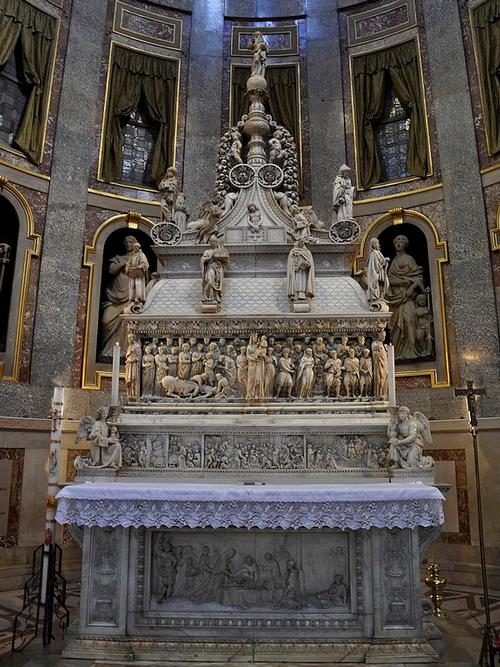
Tomb of San Domenico in the basilica of the same name in BolognaPhoto: Paul Hermans CC 4.0 no changes made
The Basilica di San Domenico is over 700 years old and has been restored and rebuilt several times over the years. Inside the church are many remarkable works of art, such as the choir stalls carved in the 16th century by Brother Damiano da Bergamo and the highly detailed and ornate tomb of St. Domenico, created by a team of leading artists including Alfonso Lombardi and Michelangelo. The Basilica di San Domenico also has many lavish chapels. Outside this basilica there are many beautiful churches to admire in Bologna.
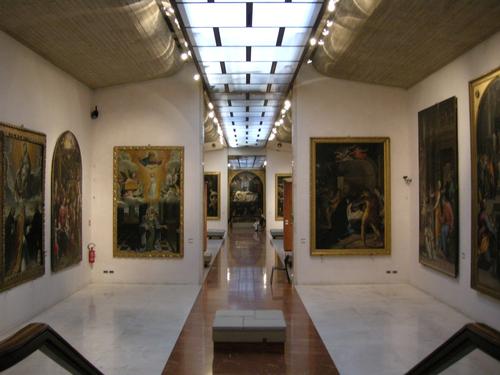 Pinacotheque BolognaPhoto: Sailko CC 3.0 Unported no changes made
Pinacotheque BolognaPhoto: Sailko CC 3.0 Unported no changes made
Bologna's most important art treasures are stored and displayed in the National Pinacothèque, which is located between the university buildings. The museum contains works by many great Italian artists, including a number of local artists. Highlights include work by 14th-century Bolognese artists - such as the painter Vitale de Bologna, with its intense St. George and the Dragon, a number of rooms with free-standing frescoes taken from the local churches and a Renaissance section filled with beautiful works by Antonio and Bartolomeo Vivarini and Cima da Conegliano of Venice.
The Archaeological Museum of Bologna contains one of the most important Egyptian collections in Italy. The museum has a remarkable group of Egyptian mummies and glorious sarcophagi, beautiful items from the Villanova culture, jewelery, artifacts from the Etruscan Velzna, funerary art, terracotta urns, old vases and also some well-preserved objects from the Roman era. Of particular note is a more than 1,500 year old bronze Certosa pot.
Tips
 Spaghetti BolognesePhoto: PublicDomain
Spaghetti BolognesePhoto: PublicDomain
Delicious food that's what Bologna is about. It is not without reason that one of the city's nicknames is La Grasse (the Fat one). The cuisine is incredibly rich and the best pasta comes from Bologna (including pasta Bolognese, of course). Other specialties of the region are: prosciutto, parmigianino and reggiano cheese and balsamic vinegar. To lick your fingers!
Useful links Bologna
BBC Country ProfilesWorld Fact Book Explore all Countries
How to call
Last updated June 2025
Copyright: Team - The World of Info